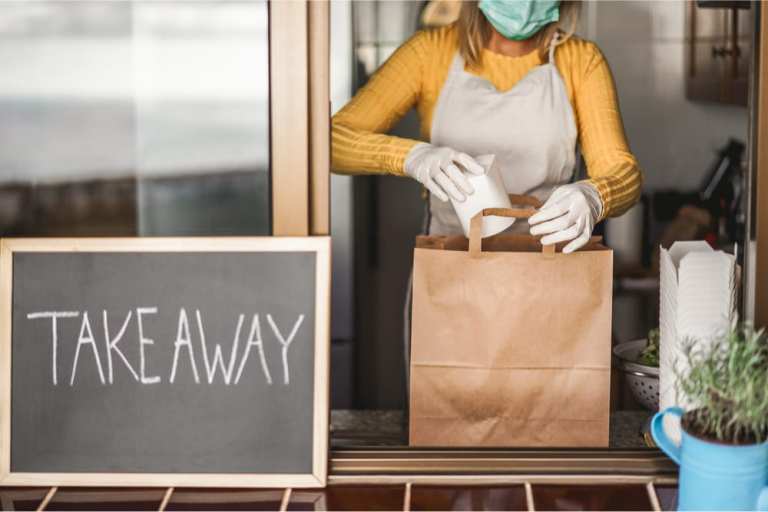
After a dark and difficult few months, there might finally be some light at the end of the tunnel for some restaurants as spring 2020 turns into summer and businesses start to open in a limited fashion nationwide.
Recent data from NPD Group shows that while restaurant chain transactions fell 18 percent year over year decline in the week ended May 24, that’s a dramatic improvement from six weeks earlier. Transactions tumbled 43 percent year over year in the week ended April 12.
Yes, major full-service chain restaurants’ transactions were still down a steep 42 percent in the latest week tallied, but that’s better than the prior week’s 49 percent decline. Quick-service restaurants (QSRs), which have been on the whole less hard hit, also saw their business fall just 17 percent last week as opposed to 20 percent the week prior.
Drive-thru windows dominated most transactions, particularly when leveraged with digital ordering ahead. That’s helped QSRs keep relatively active while their full-service counterparts have seen business nearly cut in half.
Nearly half of all restaurant transactions (46 percent) happened at the drive-thru, and digital orders grew by 106 percent in April when compared against the same time in 2019. Digital orders now account for roughly 20 percent of all consumer interactions with restaurants.
“Among the most interesting behaviors we’re seeing is the rapid escalation of using technology to engage with restaurants,” says David Portalatin, NPD food industry advisor and author of “Eating Patterns in America.” “Going forward, we might expect a digital divide that sets apart restaurants with well- executed digital offerings and requires those without to turn to the newfound prowess of third-party platforms.”
The NPD report is consistent with data from various sources over the last several days that indicated that something of a change in fortunes is coming for restaurant industry players. Recently reported data from OpenTable indicates that despite restaurant bookings still showing declines of 85 percent year over year, that figure is actually an improvement over mid-April, when booking declines were at almost 100 percent year on year.
“America is hungry to dine out again,” Applebee’s President John Cywinski told the Associated Press. “They’re naturally curious and cautious, but they’re coming out. There’s so much pent-up demand. It’s a little indulgence now to hop in your car and experience something that hasn’t been available.”
Pent-up demand that PYMNTS has also observed as it has been surveying consumers about their lives on lockdown and plans for recovery over the last 12 weeks. Consumers really do, by the numbers, miss eating out. A lot. When surveyed, some 74.6 percent of those we polled named restaurants as a one of the leading reasons for wanting to leave their homes — second only to seeing friends and family in that regard.
Regardless of how literally hungry consumers are to eat out again, however, PYMNTS data also revealed that when it comes to getting back out and about in the physical world, restaurant dining has only so much draw for consumers. When asked, 42.3 percent reported intentions of seeing family and friends more often — whereas only a little over 15 percent noted intentions to dine out.
Looking at the data, it begins to explain the uneven progress in restaurant recovery. Meals that consumers can easily order ahead digitally and grab on the go with an easy pickup process (maybe a drive-thru) are leading the recovery run back toward normal, with declines still notable but not ruinous.
But eat-in restaurants, facing limits on how many consumers allowed to gather in a single location at once, plus persistent concerns from those consumers, remain slower to recover and more looking at strategic pivots. Some have announced plans to stay closed until a vaccine hits the market rather than open with waitstaff in masks, temperature checks at the door and limited capacity seating. Others have annexed the outdoor areas around their dining establishments to increase consumer comfort, gain more capacity and make eating out a more literal statement than it has been in the past.
Will restaurants recover? It seems that they will, given that consumer desire for their services perseveres even through the pandemic. But what it will look like during the recovery process and beyond remains an open question as consumer appetite for eating out is returning rather unevenly at present.